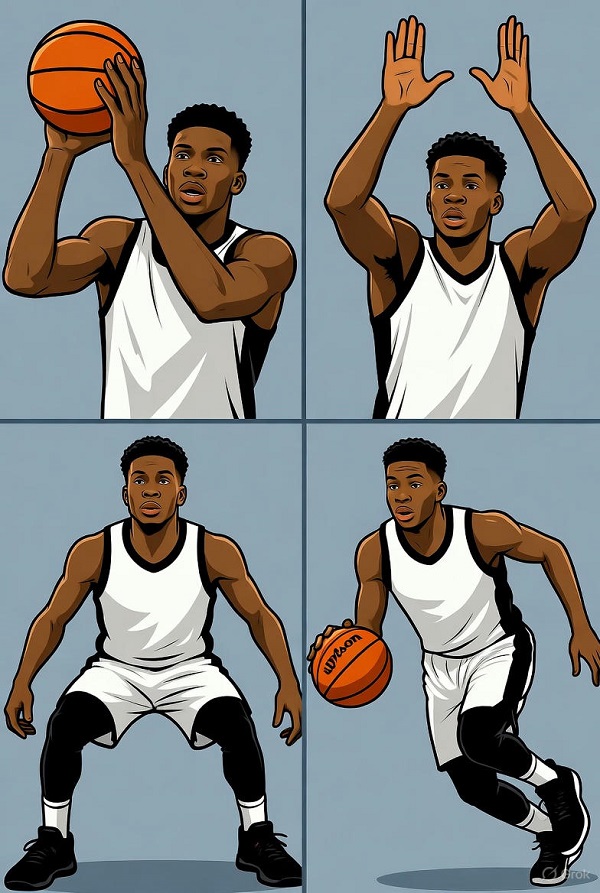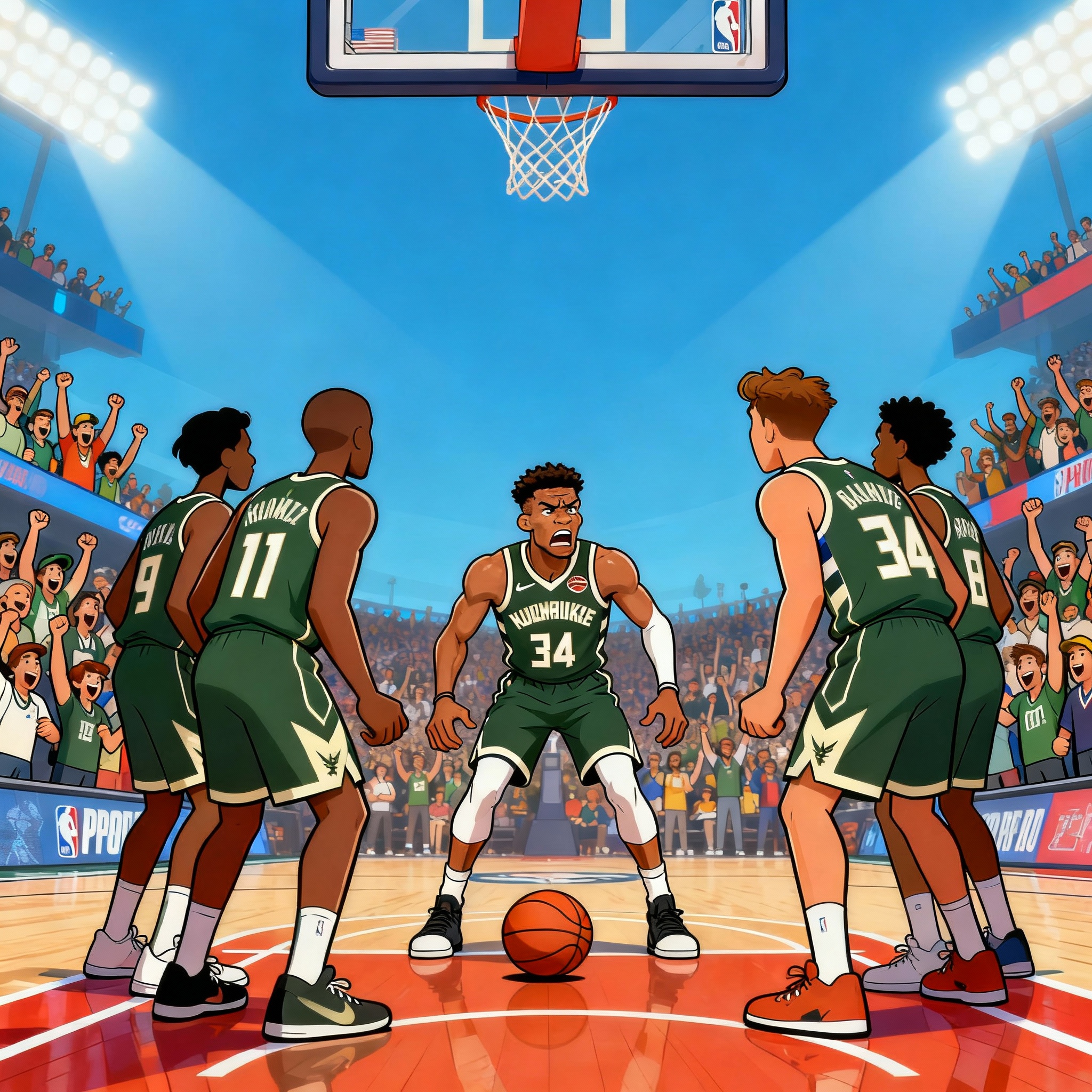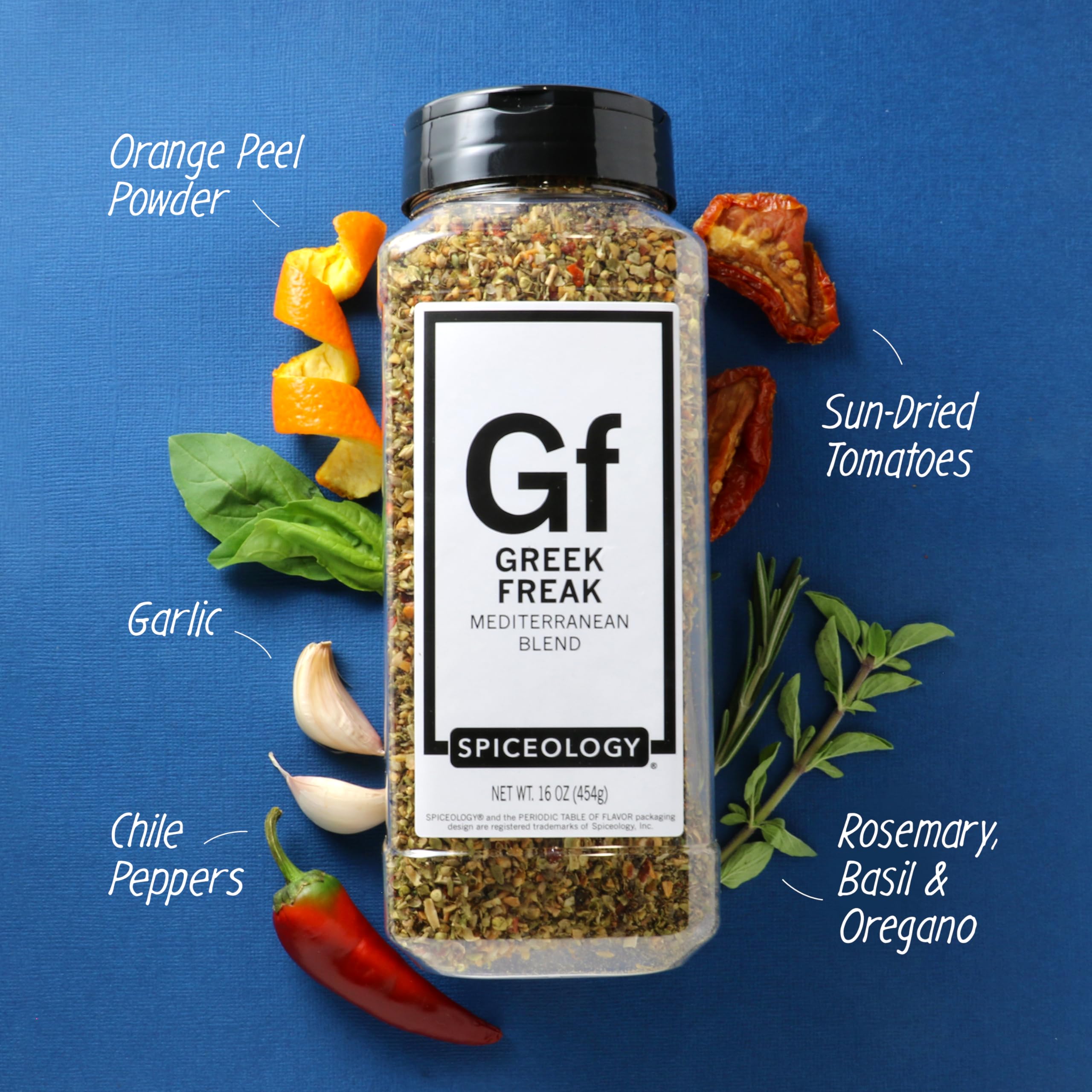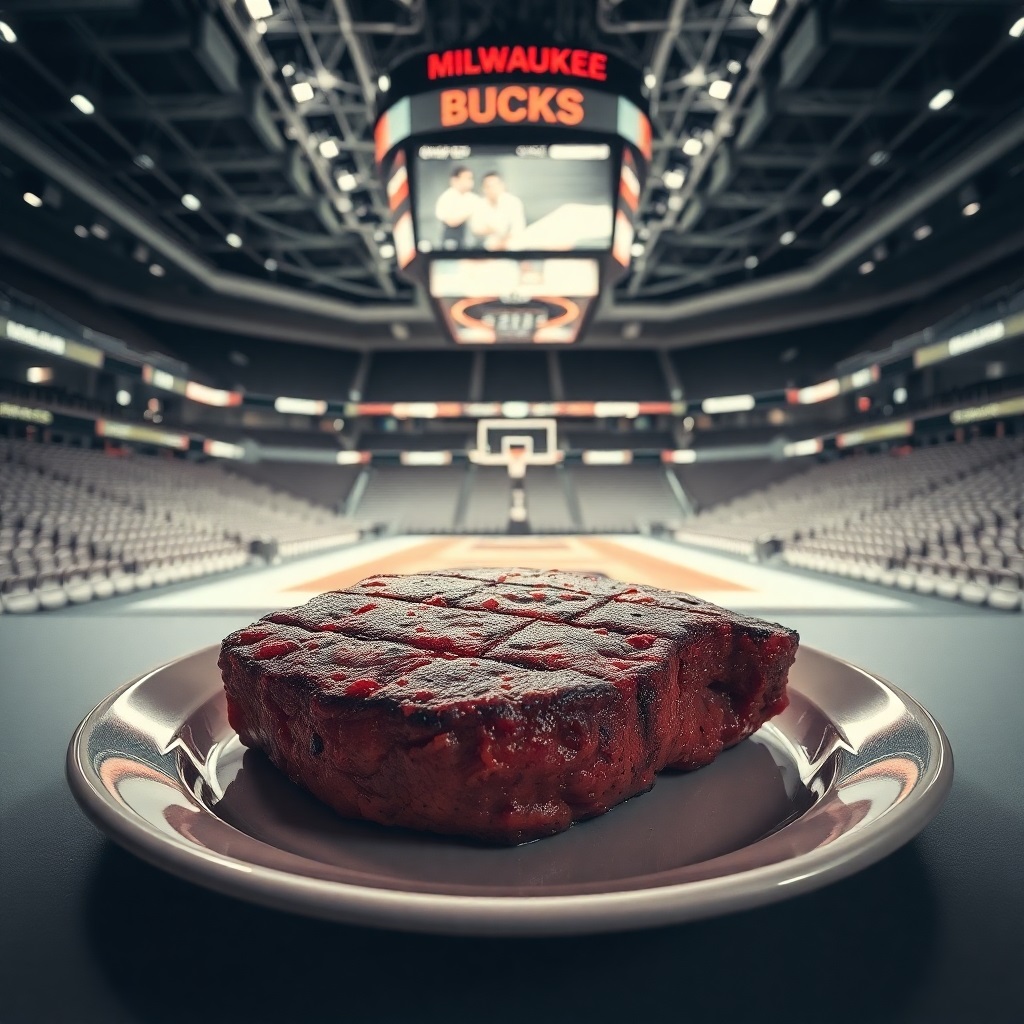The connection between Spiceology’s Greek Freak Mediterranean Seasoning and NBA star Giannis Antetokounmpo, known as “The Greek Freak,” is a notable point of contention, primarily due to a legal dispute over the use of the “Greek Freak” name. In August 2019, Giannis Antetokounmpo’s legal team sent a cease-and-desist letter to Spiceology, a Spokane-based company, demanding they stop using the name “Greek Freak” for their Mediterranean seasoning blend. Antetokounmpo, the Milwaukee Bucks’ reigning NBA MVP at the time, had trademarked “Greek Freak” in May 2014, with the trademark officially registered in February 2018. His lawyers argued that the seasoning’s name infringed on his trademark, which he uses for branding, including merchandise like apparel and his Nike signature sneaker line.
Spiceology, however, defended their use of the name, asserting they had been using “Greek Freak” for their seasoning before Antetokounmpo popularized the nickname in the NBA. According to Spiceology CEO Chip Overstreet, the company provided proof of prior use, predating Antetokounmpo’s rise to fame and his trademark filing. Spiceology also clarified that their marketing never referenced Antetokounmpo or the NBA, emphasizing the seasoning’s Mediterranean culinary inspiration rather than any connection to the athlete. After presenting their case, Spiceology did not hear back from Antetokounmpo’s lawyers, and the issue appears to have been dropped without further legal action. It would appear that Giannis’ team simply hadn’t done their homework and were simply trying to bully the company into submission without valid arguments.
Indirect Link: Shared Cultural Context
Beyond the legal dispute, there’s an indirect connection through the shared Greek cultural context. Giannis Antetokounmpo, born in Athens, Greece, to Nigerian immigrant parents, earned the nickname “Greek Freak” due to his extraordinary athleticism, size (6’11”), and Greek heritage. The nickname, which he initially disliked but later embraced, reflects his unique blend of Greek identity and global appeal. Similarly, Spiceology’s Greek Freak seasoning draws on Greek culinary heritage, blending Mediterranean flavors like oregano, garlic, and sun-dried tomatoes to evoke the essence of Greek cuisine. The name “Greek Freak” for the seasoning likely plays on the idea of bold, standout flavors, mirroring the bold, standout persona of Antetokounmpo.
However, Spiceology has not explicitly linked the seasoning to Antetokounmpo in their branding or marketing materials. Their website and product descriptions focus on the culinary versatility of the blend, targeting food enthusiasts with phrases like “You’re a Greek Freak if you can’t resist meat on a stick, sun-dried tomatoes, or too much garlic.” This suggests the name was chosen for its catchy, evocative quality rather than as a direct nod to the basketball star.
Potential for Confusion
The shared use of “Greek Freak” has caused some confusion among consumers, as evidenced by the legal action and online discussions. For example, fans or casual observers might assume the seasoning is an endorsed product tied to Antetokounmpo, especially given his high profile and partnerships with brands like Nike and Greek From Greece Café Cuisine. This confusion likely prompted Antetokounmpo’s legal team to act, as they were simultaneously pursuing other trademark infringement cases against companies selling unauthorised merchandise using his nickname.
Negative Aspects Tied to the Link
The legal dispute itself is a negative aspect for both parties:
- For Spiceology: The cease-and-desist letter created an unexpected burden, requiring time and attorney fees to respond. Overstreet noted it was a “nuisance” that diverted resources, even though the issue was resolved in their favor.
- For Antetokounmpo: The incident highlights the challenges of protecting a trademarked nickname, especially when it overlaps with a product that predates his fame. It also risks alienating some fans or consumers who might see the legal action as overly aggressive against a small business not directly exploiting his image.
Additionally, the dispute underscores a broader negative for the seasoning: the potential for ongoing consumer confusion. While Spiceology can legally use the name, some customers might still associate it with Antetokounmpo, leading to misconceptions about endorsement or quality expectations.
No Collaborative or Endorsed Connection
Despite Spiceology’s offer to discuss a potential marketing collaboration with Antetokounmpo’s team, no partnership materialized. Unlike Antetokounmpo’s brand ambassador role with Greek From Greece Café Cuisine, where he actively promotes Greek culture and cuisine, there’s no evidence of him endorsing or being involved with Spiceology’s Greek Freak seasoning.
So is the Greek Freak happy about the Greek Freak seasoning?
The primary link between Greek Freak seasoning and Giannis Antetokounmpo is the 2019 trademark dispute, where Antetokounmpo’s team challenged Spiceology’s use of his trademarked nickname. However, Spiceology’s prior use and lack of direct reference to Antetokounmpo in their marketing indicate the seasoning’s name was inspired by Greek culinary culture rather than the athlete. The shared “Greek Freak” moniker creates a loose cultural connection through Greek heritage but also fuels potential consumer confusion, a negative aspect for both the product and Antetokounmpo’s brand. There’s no collaborative or endorsed link, and the seasoning stands as a distinct product despite the legal hiccup. So maybe Giannis doesn’t really have a hold on the Greek Freak nickname like he thought he did.
But if you’re a fan of bold, herbaceous, and tangy flavours, then Spiceology’s Greek Freak Mediterranean Seasoning may be something you have considered for your pantry.
What is Greek Freak Seasoning?
Greek Freak is a chef-crafted seasoning blend created by Spiceology, a company founded in 2013 by Executive Chef Pete Taylor and food blogger Heather Scholten. Designed to embody the vibrant flavors of the Mediterranean, this seasoning is a harmonious mix of herbs, spices, and tangy elements that elevate any dish. Whether you’re a home cook or a professional chef, Greek Freak is marketed as an all-purpose rub that adds depth and authenticity to a wide variety of recipes.
What sets Greek Freak apart is its commitment to quality. The blend is made with fresh-ground, high-quality ingredients, free from fillers or artificial additives. It’s available in both regular and salt-free versions, making it adaptable to different dietary needs. As Spiceology puts it, “You’re a Greek Freak if: you can’t resist meat on a stick, sun-dried tomatoes are a delicacy, there’s no such thing as too much garlic, and your fridge is never without olives.” This playful description captures the spirit of the blend—bold, savory, and undeniably Mediterranean.
Ingredients: The Heart of Greek Freak
The magic of Greek Freak lies in its carefully curated ingredients, which combine to create a balanced flavor profile that’s herbaceous, savory, and slightly tangy. According to Spiceology, the blend includes:
- Spices and Herbs: Rosemary, basil, oregano, and parsley form the aromatic backbone, delivering the classic Mediterranean herb profile.
- Sea Salt (in the regular version): Adds a savory base that enhances the other flavors.
- Garlic and Onion: Provide a robust, umami-rich foundation.
- Orange Peel: Contributes a bright, citrusy note that lifts the blend.
- Dehydrated Tomatoes: Add a rich, sun-dried tomato flavor that’s quintessentially Mediterranean.
- Chili Pepper: A touch of heat for complexity without overwhelming the palate.
- Yeast Extract: Enhances umami, making every bite more satisfying.
- Sunflower Oil: Used in small amounts to bind the blend and ensure even distribution.
The salt-free version omits sea salt, allowing you to control the sodium content in your dishes. Unlike some commercial blends, Greek Freak avoids fillers like MSG or artificial flavorings, ensuring a pure, vibrant taste. The inclusion of orange peel and sun-dried tomatoes sets it apart from traditional Greek seasoning blends, giving it a modern twist that’s both fresh and versatile.
Why Choose Greek Freak?
There are countless seasoning blends on the market, so what makes Greek Freak stand out? Here are a few reasons why it’s a must-have:
- Versatility: Greek Freak works on everything—chicken, beef, seafood, pork, vegetables, potatoes, pasta, salads, and even pizza. It’s a one-stop shop for Mediterranean flavor.
- High-Quality Ingredients: Spiceology emphasizes fresh-ground spices and chef-crafted blends, ensuring maximum flavor and aroma.
- Dietary Flexibility: With both regular and salt-free options, it’s suitable for low-sodium diets and various dietary preferences, including gluten-free cooking.
- No Fillers: Unlike some store-bought seasonings that include additives or anti-caking agents, Greek Freak is pure and clean.
- Bold Yet Balanced: The blend strikes a perfect balance between herbaceous, tangy, and savory notes, making it bold enough to shine but subtle enough not to overpower your ingredients.
Customer reviews on Amazon highlight its effectiveness, with many praising its ability to enhance chicken, ground beef, and salads. One reviewer noted, “It’s particularly effective with chicken and ground beef, and I love its versatility in various dishes.”
How to Use Greek Freak Seasoning
Greek Freak’s versatility makes it a go-to for countless applications. Here are some tried-and-true ways to incorporate it into your cooking:
1. Proteins
- Chicken: Sprinkle 1–2 tablespoons of Greek Freak per pound of chicken, toss with olive oil and lemon juice, and grill or bake at 425°F for 25 minutes. Perfect for souvlaki or gyros.
- Beef or Lamb: Use as a rub for kebabs or meatballs. Combine with olive oil and marinate for 24–48 hours for deeper flavor.
- Seafood: Dust over salmon or white fish like tilapia, add lemon slices, and bake for a quick, flavorful dish.
- Pork: Season pork chops or tenderloin for a Mediterranean twist.
2. Vegetables
- Roasted Veggies: Toss cauliflower, zucchini, bell peppers, or potatoes with olive oil and Greek Freak, then roast at 425°F for 15–45 minutes, depending on the vegetable. Finish with a squeeze of lemon juice.
- Grilled Vegetables: Sprinkle over grilled zucchini or eggplant for a smoky, herbaceous kick.
3. Side Dishes
- Mashed Potatoes: Fold Greek Freak into mashed potatoes for an irresistible side dish.
- Hummus: Mix into homemade hummus for a Mediterranean-inspired dip.
- Rice or Quinoa: Stir into cooked grains for a flavorful base.
4. Sauces and Dressings
- Vinaigrette: Combine Greek Freak with olive oil, red wine vinegar, and lemon zest for a quick salad dressing.
- Tzatziki: Add a pinch to homemade tzatziki for extra depth.
- Marinades: Blend with olive oil, lemon juice, and garlic for a marinade that works on any protein.
5. Unexpected Uses
- Eggs: Sprinkle over scrambled eggs or omelets for a Mediterranean breakfast.
- Pizza: Use as a topping for a Greek-inspired pizza with feta, olives, and tomatoes.
- Cocktails: Rim a glass with Greek Freak for a savory twist on a dirty martini.
For best results, use 1–2 tablespoons per pound of meat or vegetables, adjusting to taste. If marinating, combine with olive oil and an acid like lemon juice or vinegar, and let sit for at least 24 hours to allow the flavors to penetrate.
Creative Recipes with Greek Freak
Here are three recipes inspired by Spiceology’s suggestions and customer feedback to showcase Greek Freak’s versatility.
Greek Freak Chicken Souvlaki
Ingredients (Serves 4):
- 1.5 lbs boneless, skinless chicken breast, cut into 1-inch cubes
- 2 tbsp Greek Freak Seasoning
- 3 tbsp olive oil
- 2 tbsp lemon juice
- 1 tsp lemon zest
- Wooden skewers, soaked in water
- Tzatziki and pita for serving
Instructions:
- In a bowl, combine chicken, Greek Freak, olive oil, lemon juice, and zest. Marinate for at least 1 hour, preferably overnight.
- Thread chicken onto skewers.
- Preheat grill to medium-high. Grill skewers for 8–10 minutes, turning occasionally, until cooked through (165°F internal temperature).
- Serve with tzatziki and warm pita.
Greek Freak Roasted Potatoes
Ingredients (Serves 4):
- 2 lbs baby potatoes, halved
- 2 tbsp Greek Freak Seasoning
- 3 tbsp olive oil
- 1 lemon, for juicing
- Fresh parsley, chopped (optional)
Instructions:
- Preheat oven to 425°F.
- Toss potatoes with Greek Freak and olive oil. Spread on a baking sheet.
- Roast for 30–40 minutes, stirring halfway, until golden and crispy.
- Squeeze fresh lemon juice over the potatoes and garnish with parsley.
Greek Freak Vinaigrette
Ingredients (Makes 1 cup):
- 1 tbsp Greek Freak Seasoning
- 1/3 cup red wine vinegar
- 2/3 cup olive oil
- 1 tsp Dijon mustard
- 1 tsp honey
- Salt and pepper to taste
Instructions:
- Whisk all ingredients until emulsified, or shake in a jar.
- Taste and adjust seasoning if needed.
- Use immediately or store in the fridge for up to 1 week. Shake before using.
Tips for Storing and Maximizing Flavor
To keep your Greek Freak seasoning fresh:
- Store in an Airtight Container: Use a glass spice jar or mason jar to prevent air exposure, which can degrade flavor.
- Keep in a Cool, Dry Place: Avoid storing near the stove or in direct sunlight, as heat and humidity reduce potency.
- Use Within 6–12 Months: While the blend can last up to a year, its flavors are most vibrant within the first six months.
- Revive Aromas: If the seasoning seems less potent, rub it between your fingers before using to release essential oils.
Where to Buy Greek Freak
Greek Freak is available through various retailers:
- Spiceology’s Website: Offers both regular and salt-free versions, with free shipping on orders over $50.
- Amazon: Sells multiple sizes, including 16 oz and 11.5 oz containers.
- Target: Carries the 1.8 oz version with options for same-day delivery or pickup.
- Specialty Stores: Available at places like Aqua Quip, GW Store, and Steve’s Ace Home & Garden.
Prices vary by retailer and size, but expect to pay around $10–$20 for a 4–16 oz container. Check Spiceology’s website for the latest promotions or bundle deals.
My conclusion
While Spiceology’s Greek Freak Mediterranean Seasoning is widely praised in marketing blurb for its bold flavour and versatility, some potential drawbacks or criticisms have been noted by users and reviewers. Here are the key negative aspects:
- High Sodium Content (Regular Version):
- The regular version contains sea salt, which may be a concern for those on low-sodium diets. Customers seeking to control salt intake may find the seasoning too salty for certain dishes, especially if used generously. The salt-free version mitigates this, but it’s a separate purchase and not always as widely available.
- Price Point:
- Greek Freak is considered a premium seasoning, with prices ranging from $10–$20 for a 4–16 oz container. Some customers on Amazon and other platforms have noted that it’s pricier compared to generic Greek or Mediterranean seasoning blends from brands like McCormick or store brands, which can cost half as much. For budget-conscious shoppers, the cost may feel steep, especially for frequent use.
- Flavor Intensity May Overwhelm:
- While the blend is marketed as balanced, some users find the combination of garlic, sun-dried tomato, and orange peel to be overpowering in delicate dishes like mild fish or simple salads. A few Amazon reviews mention that it’s “too strong” or “not subtle enough” for their taste, requiring careful measurement to avoid dominating other flavors.
- Limited Availability in Some Regions:
- Although available online through Spiceology, Amazon, and Target, Greek Freak may not be as easy to find in local grocery stores compared to mainstream brands. Customers in rural areas or those who prefer in-store shopping might face challenges or incur shipping costs when ordering online.
- Potential Allergen Concerns:
- The blend contains yeast extract, which could be an issue for individuals with sensitivities to yeast or related compounds (though it’s not a common allergen). Additionally, while the product is gluten-free, those with severe allergies may need to verify cross-contamination risks, as Spiceology’s facilities may process other allergens.
- Not Traditional Enough for Purists:
- Some Mediterranean cuisine enthusiasts have pointed out that the inclusion of orange peel and sun-dried tomatoes deviates from traditional Greek seasoning blends, which typically focus on oregano, garlic, and dill. A few reviewers on Spiceology’s site or Amazon felt it leans more “modern” than authentic, which might disappoint those seeking a classic Greek flavor profile.
- Inconsistent Expectations from Marketing:
- The playful branding (“Greek Freak”) and claims of being an all-purpose seasoning can set high expectations. A handful of customers expressed disappointment when the flavor didn’t match their vision of Mediterranean cuisine or didn’t work as universally as advertised. For example, one Amazon reviewer noted it was “great for meats but not as good on veggies,” suggesting it’s not equally effective across all applications.
- Packaging Size Complaints:
- Some customers have mentioned that the larger containers (e.g., 16 oz) are less practical for infrequent users, as the seasoning can lose potency over time if not stored properly. Conversely, the smaller 1.8 oz jars at Target may feel insufficient for avid cooks, leading to frequent repurchasing.
Whether you like it or not, Greek Freak seasoning seems to be a hit with a lot of consumers. And there seems to be no evidence that anybody buys it because of the link to Giannis. After all it would have shown in regional sales differences maybe with more being sold where the Bucks play or something. So in all a failed legal attempt by Giannis and the seasoning goes on.












